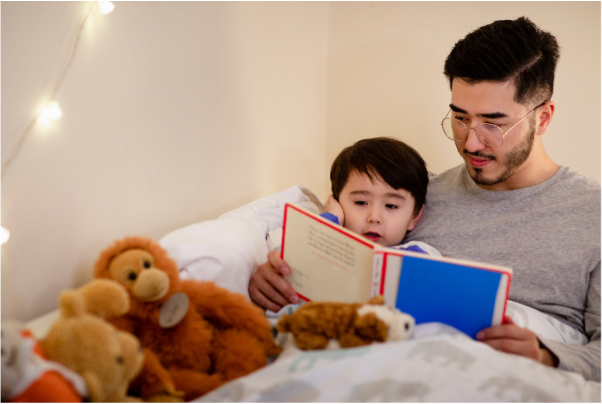Author: Sophie Robertson, Paediatric Occupational Therapist & Clinical Manager
5 min read
Sleep is vital for growing minds and bodies. However, for neurodivergent children, quality sleep can sometimes be elusive. By adopting a relationship-based, neuroaffirming approach, occupational therapists (OTs) and families can work together to address sleep challenges in a supportive and respectful way.

Why Sleep Matters
Sleep plays a vital role in development. It helps the brain process emotions, build memories, and recharge for the day ahead. For children, adequate rest is key to attention, self-regulation, and learning. Without it, even the most resilient child may struggle to navigate daily life.
Neurodivergent children, such as those with autism, ADHD, or sensory processing differences, are more likely to experience sleep disruptions. These may stem from sensory sensitivities, differences in melatonin regulation, or heightened anxiety.
Recognising Sleep Challenges
Every child experiences sleep differently, but some common sleep challenges among neurodivergent children include:
- Hyperarousal: A heightened state of awareness that makes it difficult to “switch off.”
- Routine Disruptions: Unexpected changes in bedtime or surroundings can be especially unsettling for children who thrive on predictability.
- Sensory Processing Needs: Sensitivities to temperature, textures, or sounds may prevent restful sleep.
- Sleep Anxiety: Fears of the dark or being alone may feel especially intense.
These disruptions can lead to sleepless nights for the entire family. By understanding a child’s unique needs, caregivers and therapists can work together to create better sleep experiences.
What is Sleep Hygiene?
Sleep hygiene refers to the habits, routines, and environment that promote quality sleep. For neurodivergent children, sleep hygiene involves tailoring these factors to suit their individual differences while encouraging relaxation.
It’s important to view sleep struggles not as “bad behaviour” but as unmet needs. Meeting these needs with empathy and a relational approach can make all the difference.

Supporting Families in Sleep Hygiene
Here are practical strategies that OTs and families can explore to improve sleep habits:
1. Create a Calm Sleep Environment
- Keep the bedroom dark and quiet, or introduce white noise or calming music if it helps.
- Use bedding and pyjamas that suit the child’s sensory preferences, such as soft textures, Lycra sheets, or weighted blankets.
2. Support Regulation Before Bedtime
- Balance high-energy and calming activities in the evening. For example, encourage therapeutic wrestling or trampoline jumping before transitioning to quieter activities like reading or gentle rocking.
- Reduce screen time at least an hour before bedtime to minimise overstimulation.
3. Develop a Predictable Routine
- Use visual schedules or timers to indicate what’s coming next.
- Include the child in creating their bedtime routine to honour their preferences and foster a sense of control.
4. Address Sensory Needs
- Check the environment for sensory triggers like room temperature or distracting sounds.
- Try blackout curtains, aromatherapy, or noise machines to create a soothing atmosphere.
5. Support Emotional Connection
- Spend time connecting with the child before bed through gentle conversations or snuggles to help them feel secure.
- Validate any fears they express, offering reassurance without dismissing their feelings.
6. Pace Changes Gradually
- Introduce new habits one step at a time to avoid overwhelming the child.
- Stay flexible, adapting strategies as needed and allowing room for missteps.
Building on Strengths
A relationship-based approach honours each child’s unique strengths and differences. Instead of focusing on “fixing” behaviours, the goal is to co-regulate with the child, build their self-awareness, and empower them in their sleep routines.
For families, the road to better sleep may feel overwhelming, but they don’t have to navigate it alone. By working with a paediatric OT, families can create personalised, achievable plans tailored to their child’s needs.
Final Thoughts
Sleep challenges in neurodivergent children are common, but they are not insurmountable. Using a relationship-based, trauma-sensitive approach, OTs can help families create a nurturing pathway toward restful nights.
Together, we can embrace the unique journey toward better sleep, one peaceful night at a time.
If you feel like your child is struggling with sleep, talk to an occupational therapist for further guidance. Contact MoveAbout today. Check out our Facebook and Instagram pages for more education regarding sensory processing and regulation.

